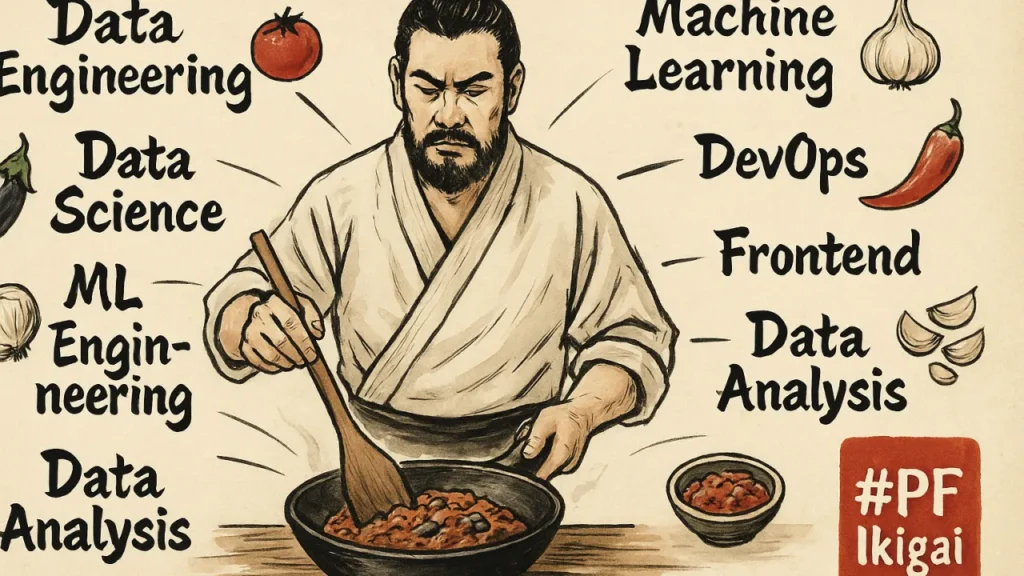Tech Writers at PF
By Himanshu Niranjani, CTO, Property Finder
A few years ago, the same consultants now pushing AI were insisting that the future of business lay in NFTs and the metaverse. Before that, it was Web3. Today, boardrooms are buzzing with excitement—and anxiety—about artificial intelligence. Buzzwords abound: LLMs, GenAI, RAG, AutoML, foundation models, autonomous agents. The energy is undeniable. The business impact? Much less so.
According to recent global surveys, 78% of organizations reported using AI in at least one business function in 2024, up from 55% just a year prior. Yet when you dig into the outcomes, reality bites: less than 10% of executives say they feel completely ready to execute AI at scale, and nearly 85% of AI projects fail to deliver expected results.
This isn’t just a tech maturity problem. It’s a leadership and alignment problem.
And that’s what I want to unpack—practically, honestly, and from the perspective of someone who’s been in the engine room of AI transformation at some of the world’s most scaled tech organizations.
Why I Wrote This
I’ve spent over two decades in engineering leadership roles at companies like Microsoft, Amazon, LinkedIn, Verizon, and Facebook/Meta. From building the global recommendation engine for Prime Video to automating system recovery in Microsoft’s early cloud efforts, I’ve seen firsthand what separates durable AI systems from throwaway prototypes.
But the hardest and most meaningful AI work I’ve done is unfolding now—in real estate. When I joined Property Finder, it wasn’t because I wanted to build AI features. It was because I saw a category ripe for reinvention—yet burdened by deep, structural friction.
Finding a home is not like choosing a movie or buying some clothing item online. It’s emotional, high-stakes, deeply local, and trust-dependent. Plugging an LLM into a chatbot doesn’t fix that. And slapping “AI” on your website doesn’t make your platform intelligent.
At PF, I made a conscious choice: we would build AI slowly, deliberately, and only after laying a foundation that could withstand scale, regulation, and—most importantly—user trust. That philosophy has become our internal north star. I call it Project Ikigai.
Why Ikigai?
The Japanese word Ikigai translates to “reason for being.” It sits at the intersection of four things:
- What you love
- What you’re good at
- What the world needs
- What you’re paid for
I believe every serious company needs an AI Ikigai—a reason to use AI that’s rooted not in FOMO but in identity. For us, that means aligning our AI efforts with the core business problems real estate users actually face:
- Can I trust this agent?
- Is this listing real?
- Will this neighborhood fit my lifestyle?
- Can I afford this property on my visa type and income level?
This isn’t just a product roadmap. It’s a discipline. And it’s sorely lacking in most enterprise AI agendas today.
Hype, Hope, and Hard Truths
Let’s deal with the uncomfortable truth: most AI efforts today are misaligned from the start.
A 2023 Gartner report found that more than 85% of AI initiatives fail. Another McKinsey study revealed that nearly half of companies using generative AI in core functions like finance and marketing reported revenue increases—but almost all of those were under 5%.
These aren’t numbers that justify billion-dollar infrastructure bets or multimillion-dollar AI vendor contracts. So what’s missing?
The answer, I’ve found, lies in how AI is treated—as a top-layer add-on instead of a cross-functional transformation.
Too often, AI is handed off to an isolated innovation team or applied to cosmetic problems: marketing content generation, chatbot wrappers, or “personalization” engines that don’t understand the business context. Leaders greenlight these projects because the optics are great. But when you zoom out, you’re left with proof-of-concept purgatory: a string of pilots, no integration, and no sustainable value.
Executive Leadership: Why AI Is a Strategy, Not a Stack
If there’s one universal pattern among AI programs that succeed, it’s this: executive sponsorship is not optional. It is the foundation.
A 2023 MIT-McKinsey study of leading AI firms found that over 75% had strong CEO or board-level champions driving AI alignment. These are not technologists moonlighting as futurists. These are leaders who understand that AI is less about intelligence and more about intention.
When DBS Bank launched its transformation to become an AI-first bank, its CEO didn’t just approve funding—he publicly committed to operating like a “22,000-person startup.” That cultural signal mattered more than any technical milestone.
At Property Finder, we’ve followed a similar approach. Our AI efforts are not owned by R&D or a labs team—they’re co-owned by engineering, product, operations, and commercial leadership, with executive sponsorship at the highest level. That structure forces clarity. Every AI model we build must serve a business priority, not just a technical curiosity.
The Pragmatic AI Framework: Five Pillars
To translate our AI philosophy into execution, I lean on a five-part framework we’ve used across multiple companies:
- Use Case Prioritization Start by identifying where latency, cost, or trust breakdowns create the most business friction. Don’t chase novelty. Solve what’s slow.
- Data and Infrastructure Readiness Before any model is trained, ensure the data pipeline is mature, accessible, and explainable. (We’ll go deeper in Chapter 2.)
- Talent and Organizational Structure AI isn’t built by AI people alone. You need product, design, operations, and engineering working as one. Silos kill intelligence.
- Governance and Risk Discipline Especially in real estate, one wrong AI suggestion can cost a user their confidence—or worse, their savings. AI needs accountability built-in.
- Execution and Feedback Loops Every model should have a production path, a feedback loop, and a value hypothesis. If it can’t show measurable impact in 60 days, rethink the use case.
This framework helps us say no to distractions and focus on long-term leverage.
How We Applied It: Property Finder’s First AI Bet
When we began shaping our AI strategy, we were bombarded with vendor pitches: chatbots, property description generators, agent avatars.
We said no to all of them.
Instead, we asked: “Where does the home search journey actually break down for our users?”
The answer was clear:
- Listing quality was inconsistent
- Agent responsiveness was unpredictable
- User intent was buried beneath search filters and tab fatigue
- Life-stage nuances (a family relocating from Riyadh vs. a single investor in Dubai) weren’t reflected in recommendations
So we built from the inside out:
- A listing trust layer, with quality detection AI and human moderation
- Agent responsiveness scoring, to our flagship product “SuperAgent”
- Early-stage image models focused on efficiently verifying listings
We didn’t start with generative AI. We started with generating confidence.
A Word on Vendors and Value
I’ve worked on both sides of the table — as a buyer and builder of platforms. Let me be direct: 99% of AI sales pitches will not work in your context.
Every vendor will say their model outperforms GPT-4. That’s not your job to verify.
Your job is to ask:
- Does this improve a business-critical KPI?
- Can it be measured inside our stack?
- Will it scale without breaking our user promise?
We use a “build where it matters, buy where it scales” philosophy:
- We built our own AI-enhanced image system in partnership with AWS — because our listings deserve visual fidelity and trust, not generic enhancement filters
- But we buy OCR, translation, and other commoditized tools
AI is not where you show off. It’s where you deliver quietly, reliably, and repeatably.
Final Reflection: Real AI Starts With Hard Questions
Every executive I speak with today is under pressure to “do AI.” But the real challenge isn’t capability. It’s conviction.
The leaders who will thrive in this era won’t be the ones with the flashiest demo. They’ll be the ones who ask:
“What is my AI Ikigai?”, “What part of my business deserves intelligence—not because it’s shiny, but because it matters?”
In the chapters ahead, I’ll go deeper into how we built our AI foundations: from tech stacks to talent shifts, from governance to scaled execution.
But remember this: AI is not a sprint. It’s a system. And if you get the system right, the intelligence will follow.





